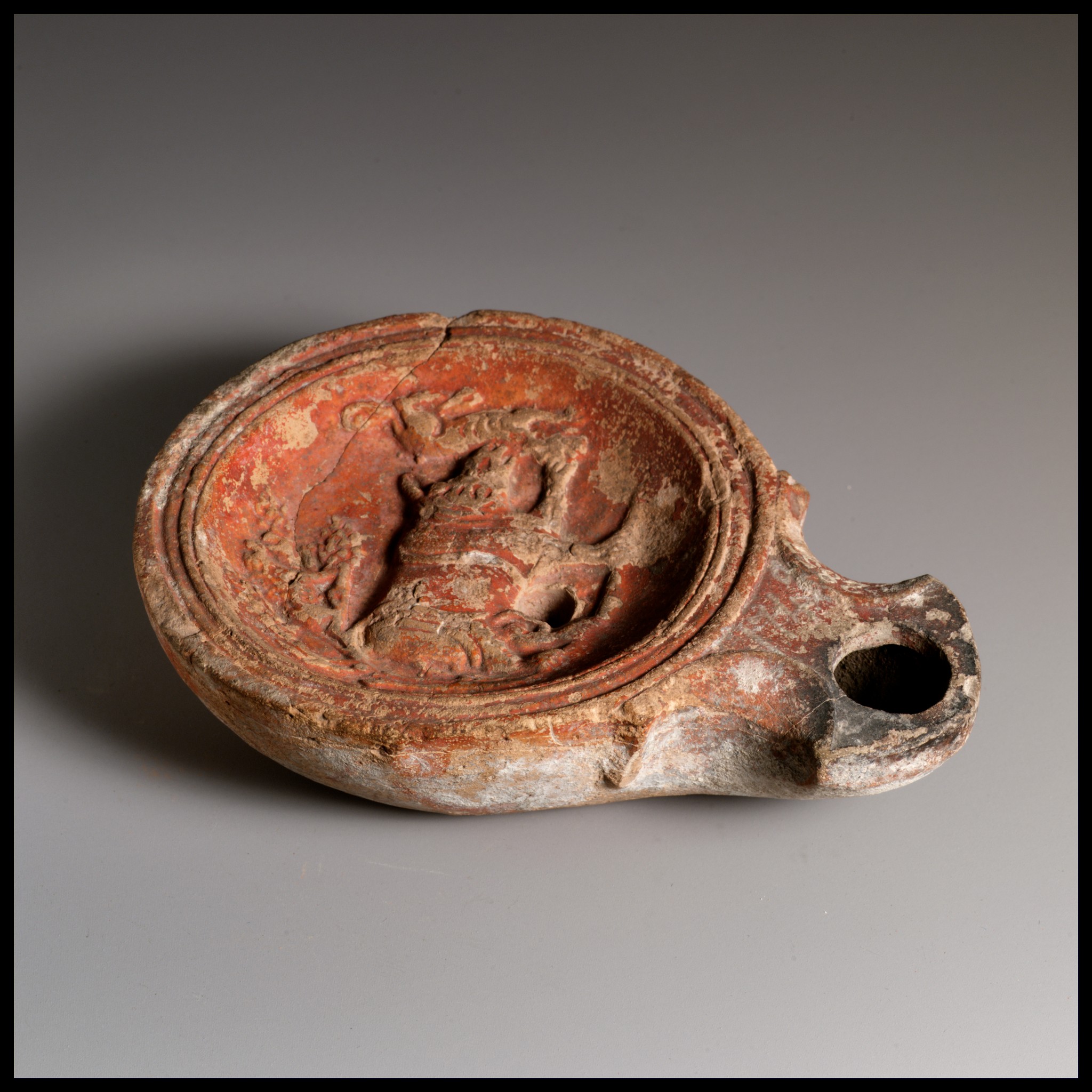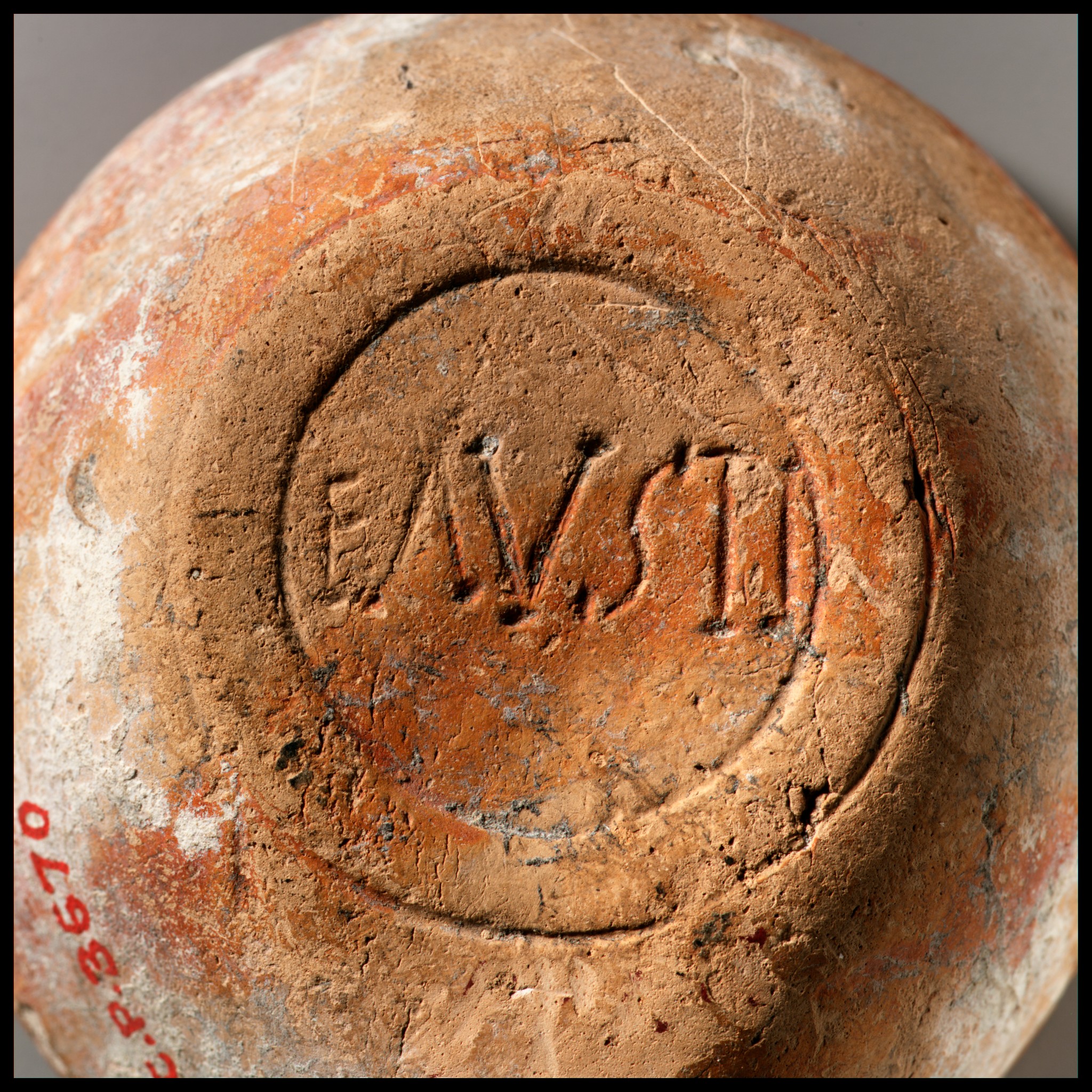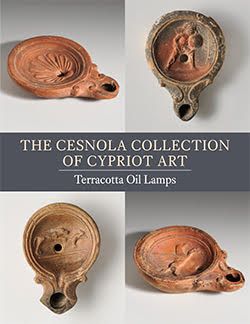Terracotta oil lamp
Loeschcke Type 1A. Mold-made. Discus: a rhinoceros stands, facing right, tossing with its horn a large cat, probably a lion, while a small animal, possibly meant to be a baby rhino, hides in a tree behind and above; a single filling hole below the rhinoceros's belly, with a band of lines and grooves around edge. Volutes flanking angular nozzle. Raised base ring, outlined by two incised circles, and a flat base with the marker's mark impressed across it, reading in Latin: FAVSTI.
Intact.
On the discus a rhinoceros is shown tossing with its horn a large cat, probably a lion, while a small animal, possibly meant to be a baby rhino, hides in a tree behind. The rhinoceros, unknown in the Mediterranean world before Roman times, is only rarely depicted in Roman art and on coins; it is shown, for example, on the Roman mosaic from Lod, Israel. The base is inscribed FAVSTI ([of the lamp maker] Faustus); he seems to have worked in Italy, Egypt, and Petra (Jordan), as well as Cyprus.
This image cannot be enlarged, viewed at full screen, or downloaded.
This artwork is meant to be viewed from right to left. Scroll left to view more.





